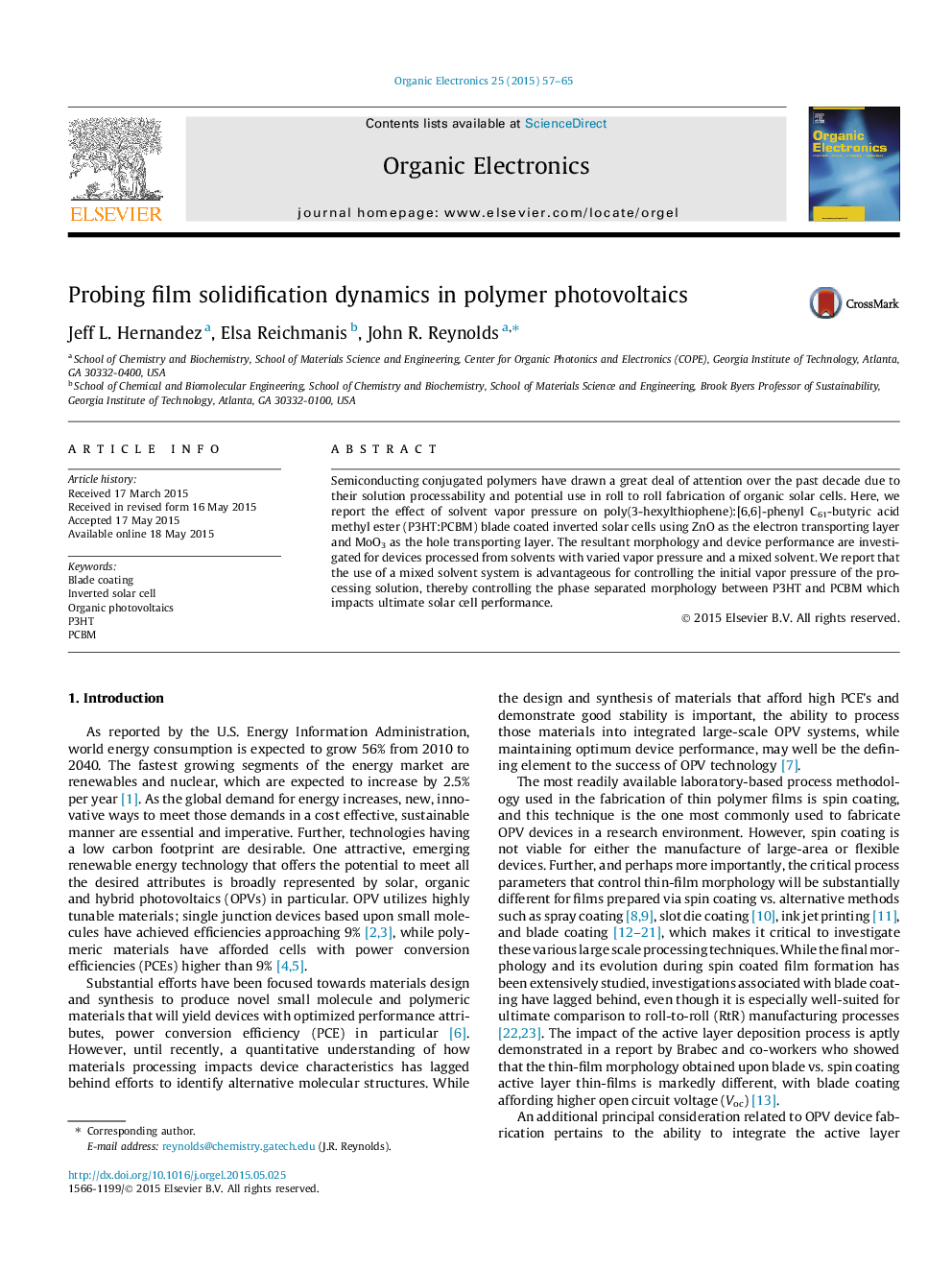| Article ID | Journal | Published Year | Pages | File Type |
|---|---|---|---|---|
| 1263621 | Organic Electronics | 2015 | 9 Pages |
Semiconducting conjugated polymers have drawn a great deal of attention over the past decade due to their solution processability and potential use in roll to roll fabrication of organic solar cells. Here, we report the effect of solvent vapor pressure on poly(3-hexylthiophene):[6,6]-phenyl C61-butyric acid methyl ester (P3HT:PCBM) blade coated inverted solar cells using ZnO as the electron transporting layer and MoO3 as the hole transporting layer. The resultant morphology and device performance are investigated for devices processed from solvents with varied vapor pressure and a mixed solvent. We report that the use of a mixed solvent system is advantageous for controlling the initial vapor pressure of the processing solution, thereby controlling the phase separated morphology between P3HT and PCBM which impacts ultimate solar cell performance.
Graphical abstractBlade coating of P3HT:PCBM organic solar cells has been carried out using active layer solutions of varied initial vapor pressure. It is demonstrated that a “sweet spot” in the solution properties leads to the optimum bulk heterojunction morphology and power conversion efficiency.Figure optionsDownload full-size imageDownload as PowerPoint slide
